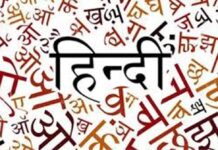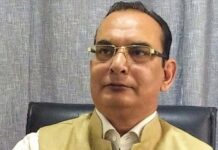By Rajashree Ghosh
INDIA New England Columnist
WALTHAM, MA–The past month of April flew by. Taxes, festivities, school break just took the wind out of my sail. One thing I did rejoice was celebrating the new year in April. That is something we tend to have to explain to those not from South Asia.

Look at it another way – It presents a wonderful opportunity to share diverse ways of breaking continuum of time and celebrating the ushering in of new seasons and year. And often fresh resolutions. As Spring sets in, “Baisakhi”, “Poila Baisakh,” “Ugadi”, “Vishu”, “Gudi padawa” – sends members of respective communities into a festive mode after the long winter months. It also these months in parts of India where crops are harvested and there is much needed respite from the hard work in the fields. And for others a break before another crop is growing.
While we celebrate seasons, it is gut wrenching and sad to hear about people perishing in India due to heat wave. Temperatures have been over a 100 degrees Fahrenheit consistently and heat related death toll has been increasing. On India’s meteorological department’s advice, the government closed schools and limited outdoor activities.
Water availability in India’s 91 reservoirs is at its lowest in a decade, with stocks at a paltry 29% of their total storage capacity, according to the Central Water Commission Some 85% of the country’s drinking water comes from aquifers, but their levels are falling, according to WaterAid. Over the years, scientists and activists have alerted to relentless groundwater extraction which can lead to decreased water table levels. They also warned that India will only have half the water it needs for residential use, industry and agriculture by 2030.
This is only the very beginning of summer in some parts and monsoon starts in June and covers the entire country through the next few months. The majority of those affected are farmers, homeless people or day laborers – the poorest in society.
It has been reported that as many as 65 farmers in Marathwada have committed suicide in April. Poor crop yields and even harvest failures force poor farmers to borrow money at high interest rates to procure seeds, fertilizers and even food for themselves and their cattle. They often mortgage their farm lands and, increase loan amounts, and soon they are burdened with crippling debt. Through three consecutive years of drought, over 300 farmers have ended their lives this year.
Referring to crisis in Maharashtra activist Darryl D’Monte states that it has worsened because of agricultural practices which are now geared to commercial crops not necessarily native to the area. He gives the example of crops like millet and sorghum being replaced with growing sugarcane that requires more water supply. The innately dry area, according him is not conducive to growing cash crops such as sugarcane and puts the blame squarely on politicians focusing on short term profits.
What this amounts to is abject neglect of the precariousness of lives of people. Globally while leaders commiserate and develop plans and strategies, not much consideration has been given to the vulnerable. Take the UN Climate Change Conference in Paris last year. It probably brought a lot of people to the table to agree about emissions and targets but through ambiguous wording also left enough leeway for nations to get away with not meeting them.
Within countries such as India governments have come and gone but there has been very little done to invest in the rural economy particularly related to water infrastructure. Analysts point that it is imminent that a large-scale national water infrastructure development program be established drawing from Indian public funds but also leverage international aid assistance to rapidly build up national water storage capacity. Utilizing advanced technology to upgrade irrigation systems is a must.
Chances are that droughts will continue to hit India again and again. The need is to find small but definite that can help protect lives. Civil society organizations have ground level knowledge of sustainable ways of water management which can help stabilize groundwater reserves. For example, Greenpeace gives priority to growing food crops that consume less water than commercial crops. In fact, the recommendation is that commercial and industrial crops be placed at the bottom of the priority list. And then there is imminent need to learn and teach watershed management, agro-forestry, rainwater harvesting. These measures imply that trees that retain water and prevent soil erosion are cultivated, and basically place knowledge and practices in the hands of the farmers. There has been enough of mourning and losing. The time is to reach out, help and celebrate life and living.
(Rajashree Ghosh is a Resident Scholar, Women’s Studies Research Center, Brandeis University.)

















We all Indians are too careless and will pay and re paying a great price for the same. We get 4000 billion cubic meter of rain and river water against our annual consumption of 1000 billion cubic meter 80% of which is by agriculture. Against this pleasant backdrop we never motivated none of 130,00,00,000 Indians to harvest even a drop of water and on the contrary we motivated them to waste water and destroy water harvesting sites by providing every one free or almost free water and provided farmers free electricity to exploit as much water as possible. I will once again plead every policy maker to promote rain water harvesting by carrot and stick method by each one of us and will plead every Indian to harvest water to save mother India otherwise no one will be able to save is .